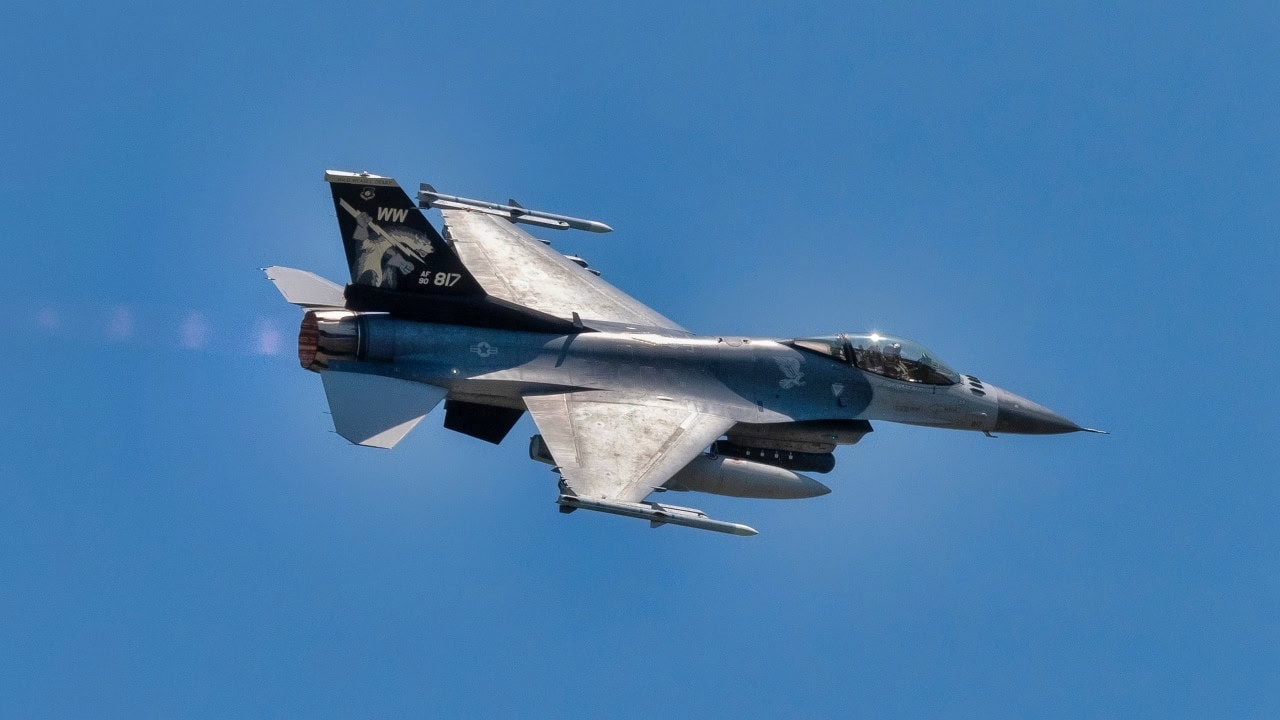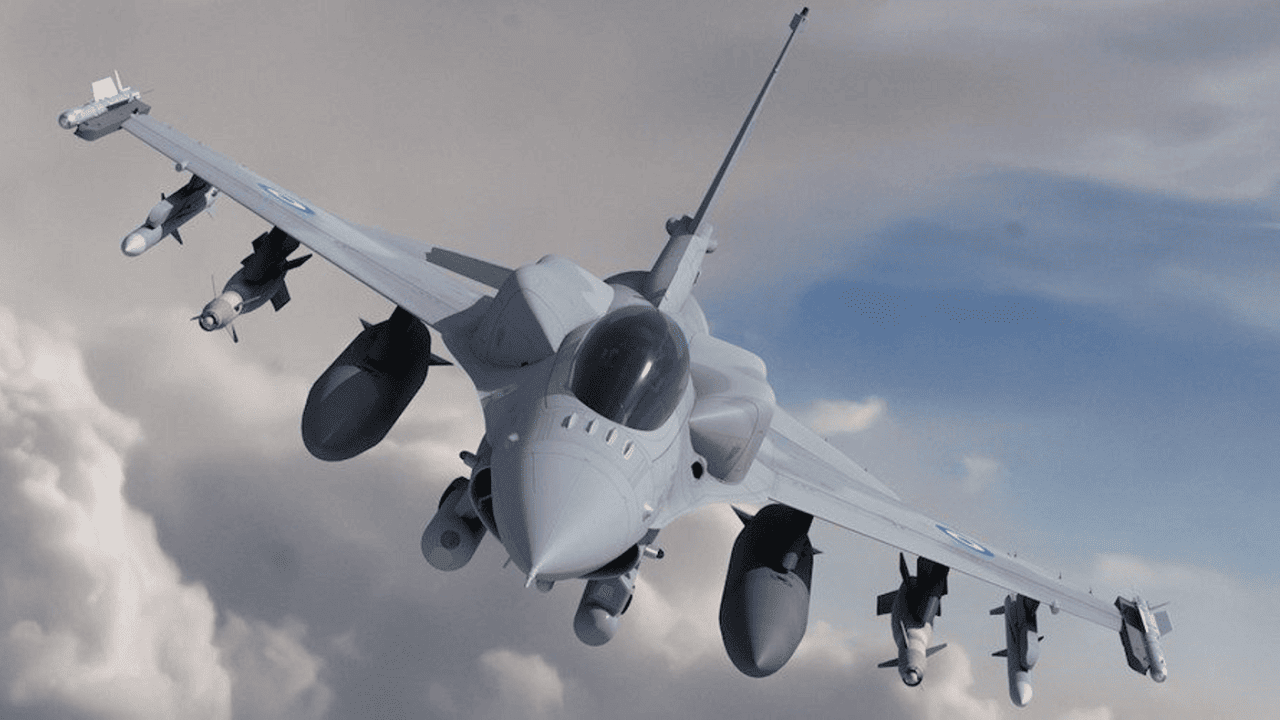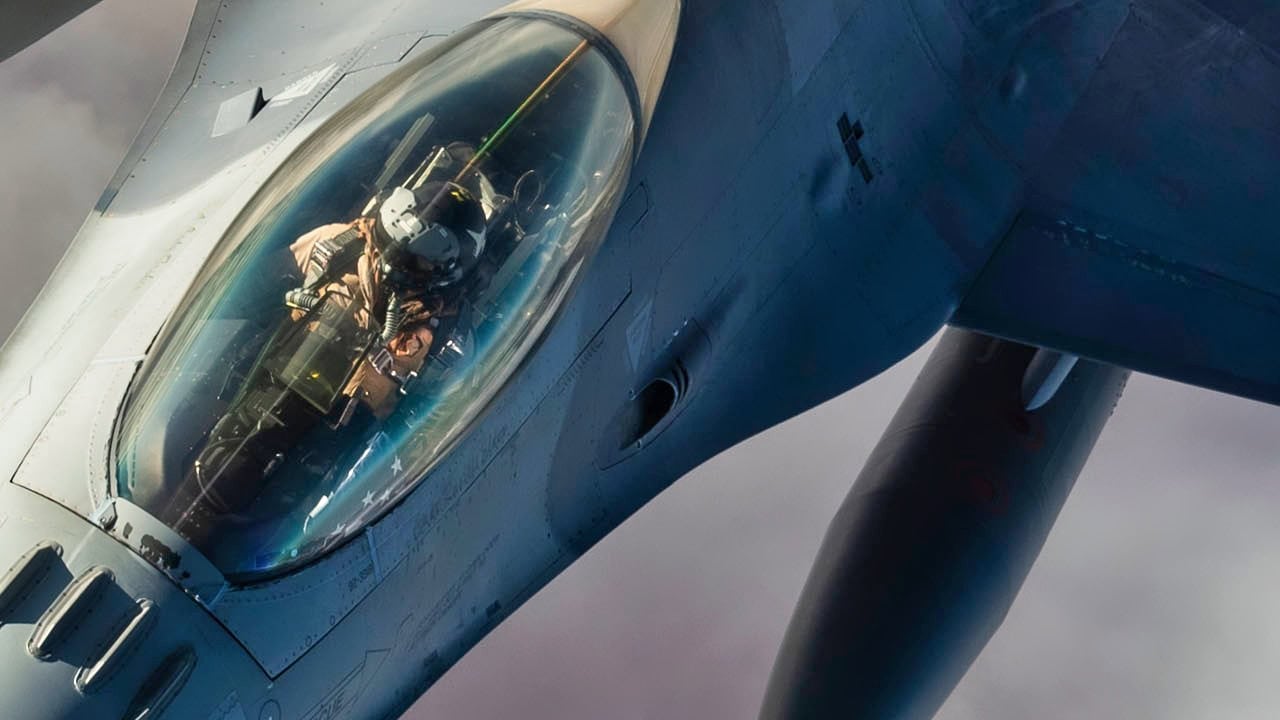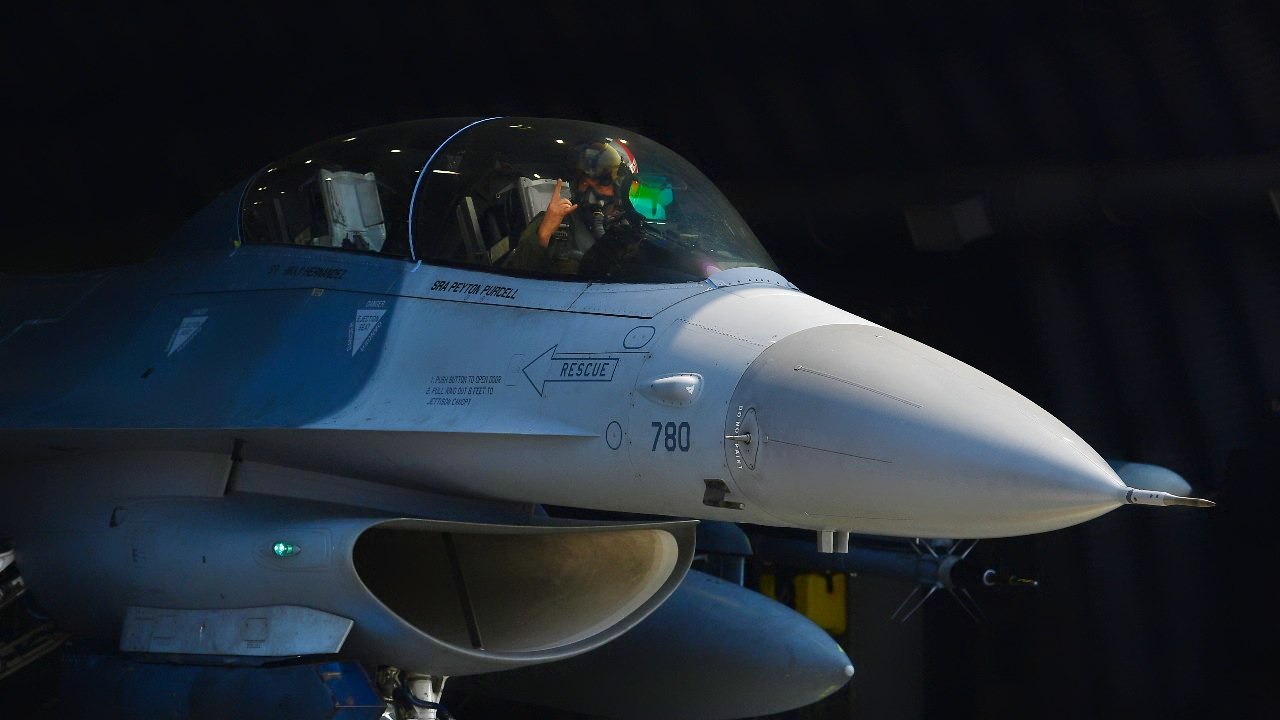Summary and Key Points: The U.S. Air Force and Navy successfully tested a groundbreaking method to integrate Harpoon missiles with F-16 fighter jets without requiring extensive aircraft or missile modifications.
-Using innovative middleware technology—a “gateway system”—the test enabled seamless communication between the aircraft and missile, significantly shortening integration timelines.

Capt. Charles “Static” Trader, both with the 13th Fighters Squadron F-16 pilots, performs an aerial demonstration in an F-16 Fighting Falcons during the Japanese-American Friendship Festival 2024 at Yokota Air Base, Japan, May 18, 2024. During two-day bilateral festival, The F-16 Fighting Falcon performs a multitude of aerial maneuvers during air festivals to showcase the ability and skill of the aircraft and pilot. (U.S. Air Force photo by Yasuo Osakabe)
-This rapid integration capability mirrors Ukraine’s success in adapting AGM-88 HARM missiles to MiG-29s, demonstrating potential broader use of existing munitions across diverse platforms.
-Streamlined weapon integration could greatly enhance combat readiness, flexibility, and responsiveness, crucial during ongoing global conflicts and in potential confrontations with adversaries such as Russia or China.
The F-16 Can Do It All
Thanks to a key piece of technology, an F-16 fighter jet could communicate with a Harpoon missile.
The capability could be added without any extensive modifications—and crucially, without a lengthy testing process.
In the first innovation of its kind, the U.S. Navy and Air Force collaborated to mate a Harpoon missile to an F-16 Fighting Falcon as part of a taxiing test for the jet.
“Our primary objective was to demonstrate that rapid weapons integration on U.S. Air Force platforms can be achieved efficiently by modifying middleware, without necessitating extensive updates to the aircraft itself,” a chief project manager for rapid integration said, according to a U.S. Air Force statement.
“This test paves the way for future projects across various platforms and weapons systems, offering leaders expanded options for operational and contingency planning.”
However, the jet did not take off with the Harpoon missile or fire it at a target.
The test evaluated the ability of the Harpoon missile and the F-16 to communicate with each other thanks to a “gateway system,” without needing any modification to either the fighter jet or the missile.
The Air Force explained that the “gateway functioned as a translator, enabling the F-16 to recognize the Harpoon and the Harpoon to receive signals from the F-16.”
The implications for rapidly testing weaponry on a variety of platforms are enormous. Rather than protected testing and development, a simple software fix could broaden the assortment of weapons that can be used on a large variety of aircraft.
The War in Ukraine
The effort is similar to previous Ukrainian efforts to mate AGM-88 HARM missiles to the MiG-29 aircraft. That initiative was a success, and the missiles were used to take down Russian radars. A video of some of those shots was released by the Ukrainian Air Force on X.
It is unclear, however, how those missiles were integrated into the Soviet-era jet—it would not be as simple as attaching the American missile to the Ukrainian jet’s underwing pylons. A kind of bridge system would be necessary to work with the jet’s electrical systems and avionics.
Another question would be how to target the missile, as the MiG-29 has an analog cockpit and lacks the digital displays of modern fighter jets. One possible solution would be bringing a tablet onboard to communicate with the HARM missiles, allowing for launch at targets on the ground.
The Versatile Harpoon
The Harpoon missile is in service with a number of U.S. allies around the world, some of whom have already mated the Harpoon to their respective aircraft. Over the medium to long term, the Harpoon appears set to be gradually supplanted by the Naval Strike Missile.
But using the Cold War-era weapon on aircraft from other branches expands arsenals at a crucial time, given conflicts in the Middle East and Ukraine, as well as the potential for conflict with China.

Greece F-16 fighter jet. Image Credit: Creative Commons.
The statement from the 53rd Test and Evaluation Group’s Detachment 3, the outfit that tested the weapon, explained that the “execution of this test event showcases a viable pathway for rapidly integrating advanced weaponry onto existing platforms, potentially transforming traditional timelines that previously spanned several years.”
It added that “the skill and creativity of the U.S. Armed Forces can lead to great results when they have the freedom to work outside the usual red tape.”
The project manager echoed that statement, adding that “this effort highlights the potential to streamline processes and improve our overall combat readiness.”

A U.S. Air Force F-16 Fighting Falcon is refueled over the U.S. Central Command area of responsibility Nov. 22, 2024. The F-16 avionics system includes highly accurate enhanced global positioning and inertial navigation systems in which computers provide steering information to the pilot. (U.S. Air Force photo by Staff Sgt. William Rio Rosado)

